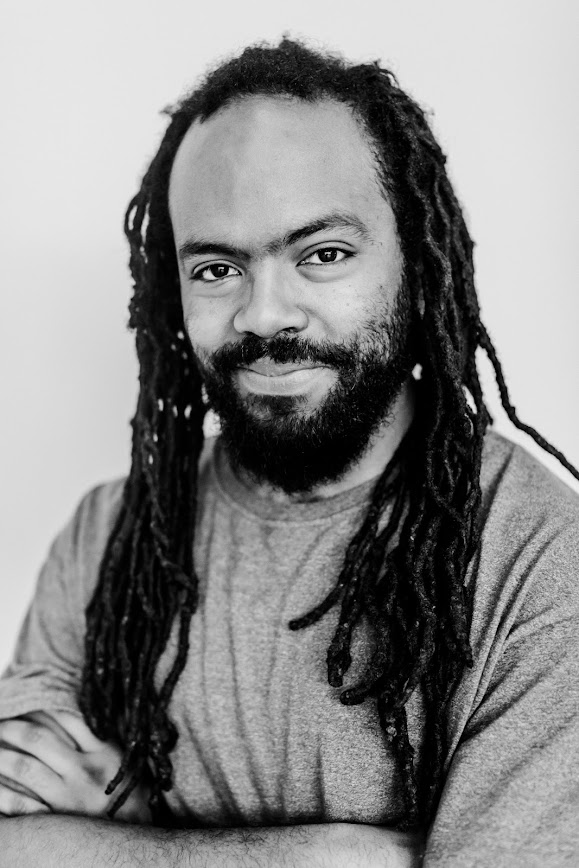New Rules on Race, Color, and Christianity

What a time to be alive, no matter your skin color!
We’ve all found ourselves uncomfortable, afraid, and maybe even ashamed.
Since the death of George Floyd last May, rampant have been the conversations about systemic racism, police brutality, and oppression.
The church has not been exempt from the dialogue either. Believers have taken up their politics, sometimes in place of religion. And if I am being honest, there have been times I’ve done the same.
Something has become lost in our conversations about racism though. There is not really a conversation, and I say this as a man with brown skin. Conversations today mean one person talks and the other shuts up and listens. Which one you are depends on your skin color.
Not only that, but which one you are depends on your opinion too. See, there is seemingly only one right and one wrong in these conversations. Again, the church has not escaped this.
Instead of valuing a diverse range of opinions, many Christians believe there is only one right perspective - their own. And of course, everyone feels like the Bible supports them.
Thus, we trade in biblical love for pretend virtue. Anyone against us is the enemy, or at the very least completely wrong.
One of Jesus’ stories that speaks to the political and racial unrest of today is the Parable of Good Samaritan (Luke 10:25-37).
Here we have a story of one person, the Samaritan, who by societal norms should hate the Jew. After the priest and Levite pass by the Jew, the enemy, the Samaritan, does not.
Today, we can change the titles of this parable’s characters. The Jew could be a black Republican being overlooked by other blacks for having a different opinion. Or the Jew could be a white person who doesn’t believe in White Privilege being overlooked by other whites.
Both people need love. Who will rescue them?
Somehow along the way, we have prioritized being right over being loving.
And yet we know from Scripture we have a responsibility to love others.
“Therefore, whatever you want others to do for you, do also the same for them, for this is the Law and the Prophets.” (Matthew 7:12)
I recently had a conversation with a woman who wanted to bake me cookies. As a greeter, I first met her and her husband as newcomers to church.
Offering cookies was a kind gesture, but as a stranger to me, I was curious as to why she offered. She began by explaining how she enjoys encouraging those who serve. Food is her way of getting to know people.
Then the moment I suspected, she said I was a “person of color” serving at a white church. She wanted to reward me.
A person of color.
Different.
Black.
Victim.
These thoughts ran through my mind. She labeled me as different from her, and I suppose she saw herself as devoid of color.
In response, I decided to use pleasant words and explain my disapproval of her phrase (Proverbs 16:24). Everyone has color. And that term, however remodeled, in my mind is no different than the archaic term colored people.
Both have colonial origins.
She heard my complaint, and she dismissed it. She explained that colored people is not the same as people of color. She said that she is white and scientifically speaking, white didn’t classify as a color.
Depending on your definition, white is indeed a color.
Regardless, I thought to say if I drew a picture of her and colored it. I wouldn’t use the color white. I would use the color peach. And if she did that for me, she wouldn’t use black, she would use brown.
How did we become so black and white?
Not just physically, but mentally.
This brief conversation with my fellow Christian drove me to ponder more on the issue of race in America. Do people truly want a solution, or do people simply want to feel good by pretending to be the Good Samaritan?
After all, if I don’t like a term, does it still define me?
What Is Race?
The words white and black are loaded with different connotations.
This makes sense though. Colors are a part of our culture as they help convey emotions and ideas. This is true even in the Bible.
“‘Come, let’s settle this,’ says the Lord. ‘Though your sins are scarlet, they will be as white as snow; though they are crimson red, they will be like wool.’” (Isaiah 1:18)
Today, our use of colors runs deeper than describing skin color. We identify certain establishments as the black church or the white church, or sounds as black music or white music.
We seem bent on classifying ourselves into different categories. And the more we classify ourselves by color, the less biblical sense we make.
God is not concerned with the outward appearance, but with our hearts.
“But the Lord said to Samuel, ‘Do not look at his appearance or his stature because I have rejected him. Humans do not see what the Lord sees, for humans see what is visible, but the Lord sees the heart.’” (1 Samuel 16:7)
Still, our “conversations'' about White Fragility, White Privilege, and Systemic Racism abound. And we don’t get anywhere. Let’s be honest, these are not new conversations.
The topic of racism is as old as human nature. We’ve had this dialogue about race in America at least since the Civil War.
How do we move forward?
To get there we have to first dissolve this convoluted word called race.
Here’s an easy equation.
Race = Skin Color + Culture
If there were ever an appropriate use of the word social construct, then it applies to the term race.
When people use that word, they are talking about how someone looks (skin color) and how they behave (culture). We have to realize that skin color does not equate to behavior, no matter your hue.
Thus, if there is a race, then there is only one race.
Otherwise, saying terms like African-American makes little sense without using the term European-American.
Our inclination to divide ourselves is the cause of racism. There is a solution, however.
And that solution comes from Jesus.
What Is Race in Christianity?
Jesus’ commandment to love is the cure for racism in the human heart.
Every human has been made in God’s image. Every human was nurtured in the womb by God (Psalm 139:13).
All we have to do is treat one another as we would like, and see each other as God’s children (Genesis 1:26).
The reason we haven’t solved racism is because Christians are not able to appropriately model love.
We define love differently.
Ironic right? We read the same text but define love differently.
I saw this highlighted for myself firsthand. Last summer, I attended racial reconciliation talks at church for a number of Sundays.
There, I was told that diversity honors God’s kingdom, much like the various birds in the sky. In the appraisal of diversity, people expressed their kindled interest in supporting blacks and reacquainting themselves with black friends from long ago.
They especially wanted more black people at church.
This was their choice in light of police brutality that they interpreted as inherent racism.
To solve racism, they as white people needed to do something for their underprivileged counterparts.
In their heartfelt pursuits, interestingly, no one wanted to talk to me, the only black in the class.
They all spoke factually about the lives of black people, though no one could respond to my inquiries about violence in black neighborhoods, the number of broken marriages, single-parent homes, high school dropouts. These questions were uncomfortable.
And unanswered.
They knew the country was racist and needed to be changed. If they genuinely wanted change though, shouldn’t they have engaged in dialogue with me?
Wasn’t I the victim who needed saving?
Or did they just want to feel good about themselves?
In some ways, I could relate to the Jew in the Parable of the Good Samaritan. The people I expected to help (especially if I was a victim) did not. They walked by in their own pursuit of social justice, forgetting the biblical principle of love.
Even without their listening ears, or inquiring minds, I knew a solution had to be created to move our dialogue away from stagnation. The racial reconciliation talks ended without a consensus for a solution.
Right now, America is in the same state of stagnation, but our solution has always been known.
The New Rules of Color
As a writer and artist, I have been blessed with the gift of creativity. As I write or draw my characters, I have to describe them in a way that readers or viewers can understand. Describing skin color is unavoidable.
In my stories, I have abandoned the talk of race that plagues America today. Race has no place in my work because race is a social construct. There are skin colors, and there is culture, but the two are not the same.
With that in mind, I have taken to describing my characters by the actual color of their skin. If their skin is not black like the night, then they are not black. If their skin is not white like a cloud, they are not white.
I’ve escaped the connotations of both words by trading in black for brown, and white for peach.
I have to ask myself, “Why stop with stories? Why not talk about people that way in real life?”
There is no greater solution for ending racism than what the Bible advocates (Matthew 22:39).
Love is the only way.
We are all God’s children, or none of us are God’s children.
We are either all people of color, or we are not.
The more time we spend blame-shifting or victimizing others or others, the more time we spend away from love, away from the solution.
If we alter our language, maybe we can then spark change.
When we want to describe our skin complexion, we can go to the color wheel and see where we best match up.
I’m not a black man. I am a brown man.
The cookie lady is not a white woman. She’s a peach woman.
New colors. New names. New possibilities.
Related: Listen to our FREE podcast, Faith Over Fear, where we dive into the topics that bring us the most fear and the courage we need to face them. In the episode below, we talk about the courage we need to stand up to racism. Listen now:
Photo Credit: ©GettyImages/wildpixel

Get in touch with him at aarondanthony.com and check out his debut short story anthology Honey Dreams on Amazon and Barnes and Noble.
Originally published February 02, 2021.







